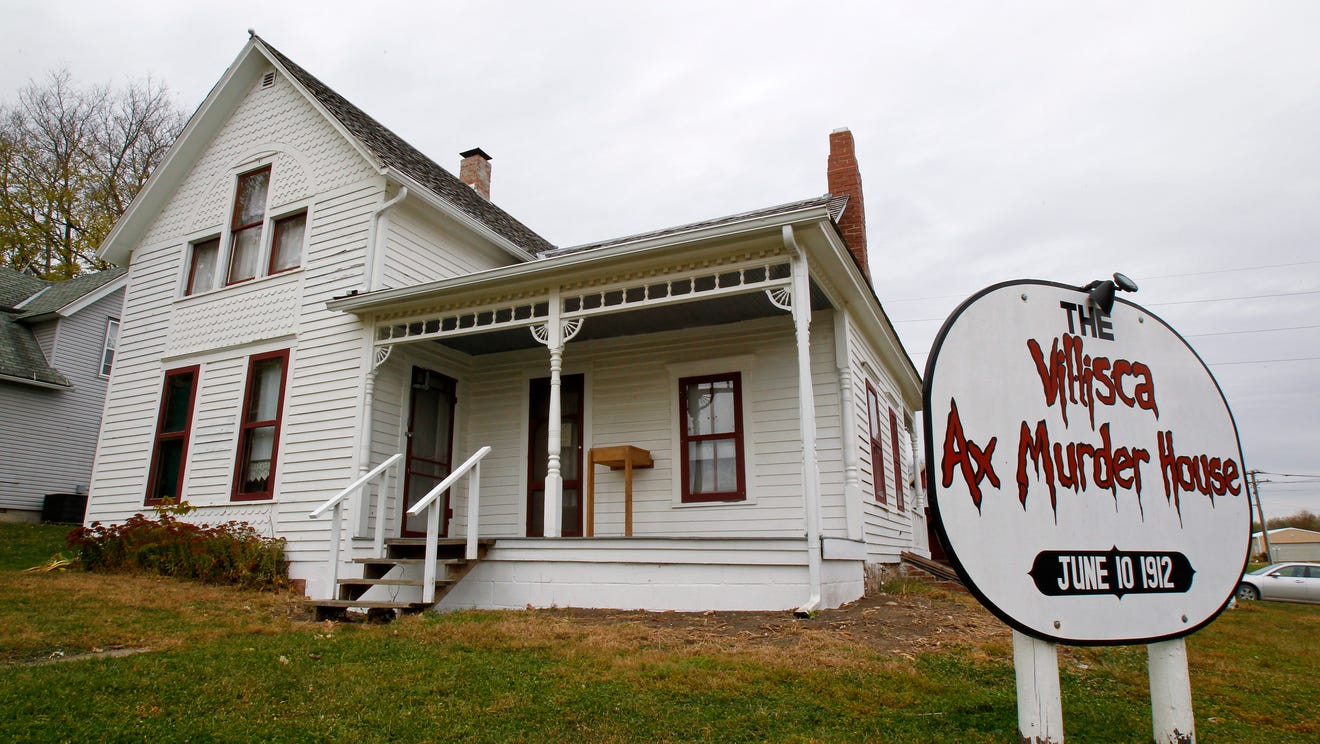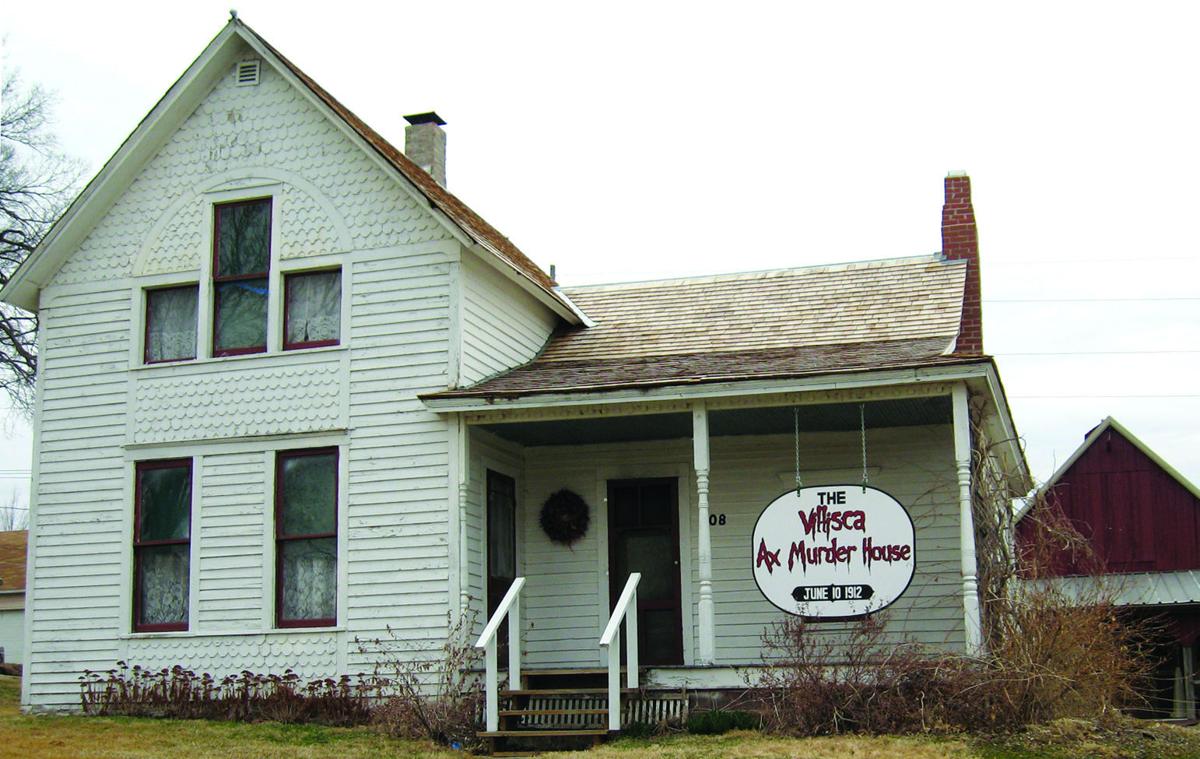Can a single act of violence, a night of unimaginable brutality, truly cast a shadow that stretches across generations? The Villisca Axe Murders, a crime etched into the annals of American history, continue to baffle and horrify, a testament to the enduring power of unsolved mysteries.
The quiet, rural town of Villisca, Iowa, nestled amongst the rolling hills and fertile farmland of the Midwest, holds a dark secret. On the night of June 9, 1912, a scene of unimaginable horror unfolded within the walls of a modest home, forever altering the town's identity and casting a pall of fear over its residents. The victims, the Moore family Josiah and Sarah Moore, along with their four children, Herman, Katherine, Boyd, and Paul and two young guests, Lena and Ina Stillinger, were brutally murdered with an axe. The crime scene was ghastly, and the mystery surrounding the murders has persisted for over a century, captivating true crime enthusiasts, historians, and law enforcement alike.
The chilling details of the Villisca Axe Murders remain a potent draw for those interested in the macabre. The house, now known as the Villisca Axe Murder House, stands as a testament to the tragedy, offering tours and overnight stays for those brave enough to confront the unsettling atmosphere within. This house, once a symbol of a loving family, has been renovated and preserved, not to erase its history, but to keep the story of the Villisca Axe Murders and the Moore family alive. It is an experience, a place where the echoes of the past resonate.
The Villisca Axe Murders remain a chilling reminder of the darkness that can lurk beneath the surface of everyday life. The following table presents key information about the location and the events:
| Category | Details |
|---|---|
| Event | The brutal murders of eight people (six children and two adults) with an axe. |
| Date | June 9, 1912 (murders occurred overnight) |
| Location | Villisca, Iowa, USA |
| Victims | Josiah Moore, Sarah Moore, Herman Moore, Katherine Moore, Boyd Moore, Paul Moore, Ina Stillinger, and Lena Stillinger. |
| Weapon | An axe, likely belonging to the Moore family. |
| Status | Unsolved; no one was ever convicted of the crime. |
| Suspects | Multiple suspects were investigated over the years, including Reverend George Kelly, William Mansfield, and others, but no conclusive evidence ever surfaced. |
| Investigation | Despite a nationwide manhunt, two trials, numerous suspects, and even a confession, the case remains cold. |
| Historical Significance | One of the most notorious unsolved murder cases in American history, subject to extensive investigation, media coverage, and historical analysis. |
The Villisca Axe Murders are far more than a simple crime; they've become a symbol of enduring mystery. The case's complexities have fostered a legacy that continues to capture the public's imagination. Throughout the years, a multitude of individuals have attempted to solve this case, through relentless investigative work. Over ten years of investigation, multiple grand jury hearings, and slander lawsuits. The case also saw two murder trials. These events have shattered lives and broken careers, solidifying the case's notorious reputation.
The location of the murders, Villisca, Iowa, is situated in Montgomery County, a rural area of southwest Iowa. The town itself is nestled between two rivers, surrounded by rolling hills and fertile farmland. Villisca's origins can be traced back to a settlement known as "The Forks," and by 1858, the area was sparsely populated. As of 2019, the town's population was around 1,100 people, a number that has certainly felt the impact of the enduring notoriety of the axe murders. The enduring legacy of the murders has made it a destination for those fascinated by true crime and the paranormal. The Villisca Axe Murder House stands as a chilling testament to the events of that fateful night.
The impact of the tragedy on the local community was devastating and its effects still felt today. The victims were not just names; they were members of a close-knit community. The Moore family and the Stillinger girls were known and loved. The brutality of the crime shook the foundations of the town and left an indelible scar on its collective memory. The house itself, once a home filled with laughter and love, became a symbol of fear and loss, the very essence of what transpired there still haunting the house.
The investigation into the Villisca Axe Murders was extensive, involving local law enforcement, private detectives, and even a nationwide manhunt. Despite their efforts, the case remains unsolved, a testament to the elusiveness of the killer. Numerous suspects were considered, and two trials were held, but no concrete evidence ever definitively linked anyone to the crime. The lack of a clear resolution has only added to the enduring mystery and intrigue surrounding the murders. One of the suspects was Reverend George Kelly. The investigation involved significant community interest and several public figures. Alice Willard was the only witness who would testify under oath that she overheard suspect William Mansfield and Iowa State Senator Frank Fernando. It remains a case with numerous layers and avenues of approach.
The lack of a definitive answer has fueled speculation and conspiracy theories. It also prompted an intense search for answers, leaving many to delve deeper into the events of that day. The fact that the case remains unsolved has only intensified the fascination of investigators, true crime enthusiasts, and the general public, thus leading to the Villisca Axe Murders' continued relevance and status as a chilling example of a cold case. The events that unfolded continue to fascinate and horrify. This enduring mystery has fueled the imaginations of many.
The 1912 Villisca Axe Murders blog offers a place to start for insights into the case. The blog has also provided occasional coverage of the case and provides an additional layer of information. Several bloggers offer their views on the midwest ax murders. The case itself became known as the Villisca Axe Murders, and it would befuddle investigators for many years to come. As early as May 1913, investigators speculated that the Moore family's murder might be part of a series of crimes perpetrated by a serial killer. This possibility offered another level of investigation to the police. In the aftermath, the investigation led to many theories that further solidified the mysteries of the crime.
The house, redubbed the Villisca Axe Murder House, now is open for tours and overnight visits. Find information on tours, including overnight stays, at villiscaiowa.com. In October, the Logan Public Library will host fun Halloween programming for all ages. The author Ed Epperly will participate in a discussion of the infamous Villisca Axe Murders and the Logan connection.
The grisly details of this unsolved murder mystery have become a major part of the town's identity. This mass killing of eight people has baffled law enforcement, historians, and true crime aficionados for over a century. In an interview, Oscar Wendstrand, the prosecuting attorney of suspect Reverend George Lyn Jacklin Kelly, stated that if Alice Willard's testimony were true, F. Jones was guilty. His words echo the frustrations and unanswered questions that continue to haunt the case.
The Villisca Axe Murders | Iowa Cold Cases, Discover the history of the Villisca Axe Murders and what occurred here in June 1912, one of America's most gruesome unsolved octuple murders. The murders committed in Villisca, Iowa, against the Moore family Josiah, Sarah, and their children, Herman, Montgomery, Mary Katherine, Arthur Boyd, and Paul Vernon and the two visiting girls, Ina Mae and Lena Gertrude Stillinger, were particularly heinous because of the large number of children killed.
What truly inspires such actions?
The bodies of Josiah and Sarah Moore, their four children, and the two visiting girls were found in the Moore home in Villisca, a Montgomery County town located about 100 miles southwest of Des Moines. The Villisca Axe Murders remain the most notorious murders in Iowa's history. There were slander lawsuits and two murder trials, and it made and broke political careers. Ed Epperly and Four Walls Films' Kelly and Tammy Rundle will discuss the murders and the new documentary on Epperly called "Axman." The ax used in the murder will also be on display. The questions remain: Why? And who?
The enduring legacy of the Villisca Axe Murders is a complex mix of history, mystery, and the persistent human quest for truth. The unsolved nature of the case continues to draw interest, but it also encourages people to reflect on the impact of violence on individuals and communities, and the enduring power of the past.
For more information on the Villisca Axe Murders, you can visit the official website of the Villisca Axe Murder House: villiscaiowa.com


